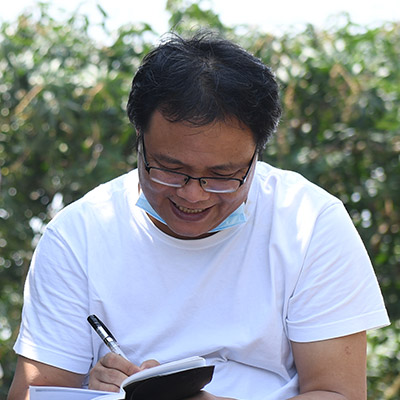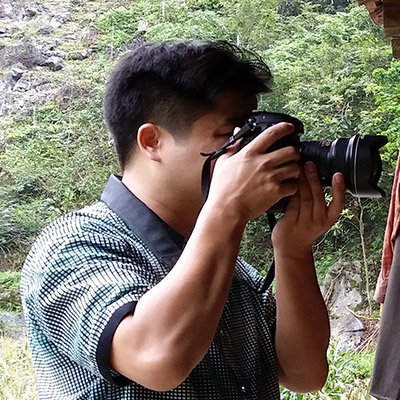

From mountain to town: Relocation brings Baiku Yao people new lease of life


Listen to this story read by AI voice.

Located in the northwestern part of Guangxi, Nandan County is noted for the Baiku Yao People, or the White-Pants Yao People, an ethnic minority known for their white-colored pants. The minority has kept its culture intact, and is dubbed as "living fossils of human civilization."
China has about 50,000 Baiku Yao People, and 42,000 of them are now living in Nandan County. During China’s 13th Five-year Plan period (2016-2020), more than 23,000 Baiku Yao People in Nandan were registered as poverty-stricken, accounting for nearly half of the county's poor population.
Many of the Baiku Yao People used to live in hard-to-reach hamlets scattered in the bare rock mountains. The towering mountains blocked people and services from the outside, and kept the reclusive mountain dwellers impoverished for generations.
Back in the mountain-locked villages, road access was inadequate, and most of the time people had no other choice but walking since many roads were either paved by dirt or small stones, which made the vehicles very bumpy and could barely get through.
In the past, local people had to live in huts made of wood or mud and their household items were simple and old. When it rained, the houses leaked and wind blew through.
The acute shortage of drinking water and arable soil was another challenge for the mountain inhabitants. They had to collect rainwater in water tanks for daily use. Facing limited arable land for crops because of barren soil, locals eked out a living by growing corn in the cracks of the rock mountains.
As the rock mountains were not suitable for living, the local government decided to relocate the Baiku Yao People to help lift them out of poverty.
In 2017, the county government started a resettlement project that involved a total of 1.37 billion yuan (about 197 million U.S. dollars) of investment to build three major resettling residential districts in the county to accommodate the ethnic people. Finally, about 13,500 people moved there.

A resident rides a motorcycle out of a poverty-relief relocation site for the Baiku Yao people in Nandan County.
More than 2,400 new houses were built with cultural features of the Baiku Yao People, with bronze drums and oxhorns painted on the walls. The new houses are equipped with gas, tap water, flush toilet and a variety of furnishings.

Lu Laoai’s wife He Guiying weaves cloth in her new house at a poverty-relief relocation site for the Baiku Yao people in Nandan County.
Kindergartens, primary and middle schools and hospitals have also been in place in these districts. With paved roads, a motorcycle ride to the county seat takes nearly half an hour.

A primary school near a poverty-relief relocation site for the Baiku Yao people in Nandan County.

A view of a poverty-relief relocation site for the Baiku Yao people in Nandan County.

Two boys play whipping tops at a poverty-relief relocation site for the Baiku Yao people in Nandan County.
Most of those residing in the mountains moved into the county center, beginning a new phase of life.
While lifting people out of poverty was the first step, efforts have also been made to ensure the relocated residents to settle down, have jobs, earn money and lead better lives.

Li Zhiming tends tea-oil trees at a tea-oil tree plantation in Baxu Yao Township of Nandan County.

Village doctor Li Mou (1st L) pays a visit to Li Zhiming's family at a poverty-relief relocation site for the Baiku Yao People in Nandan County.
In the resettlement sites, poverty-alleviation workshops have been established and industries have been developed according to local conditions, ensuring a steady source of income for the relocated residents.
Local authorities are betting on tourism to empower the Baiku Yao People. For instance, the three relocation districts have also become tourist attractions with ethnic cultures.

A view of a poverty-relief relocation site for the Baiku Yao people and an adjacent tourist attraction under construction in Nandan County.
Locals have been encouraged to do ethnic performances for tourists and develop homestays. Wearing their distinctive white pants, the Baiku Yao People fire guns in the air, play drums and whip tops to welcome tourists from afar.
By far, most of the impoverished Baiku Yao People in the county have bid farewell to poverty.

Zhou Hua
Born on Oct. 24, 1977, Zhou Hua has been working as photojournalist at Xinhua News Agency Guangxi Branch since July 2001. His coverage focuses on poverty-relief efforts, the Belt and Road Initiative and other human development issues.

Lu Boan
Lu Boan was born in August 1976, and began working as photojournalist at Xinhua News Agency Guangxi Branch in December 2011. He spends most of his time photographing rural teachers and the development of ethnic cultures.
Producers: Wang Jianhua, Xue Dongmei
Editors: Lin Fanjng, Chen Liqun, Li Mangmang, Cui Bowen, Wang Siwei, Yu Yang, Meng Tao, Lian Yi
Web Designers: Peng Yuhe, Wang Yiliang
